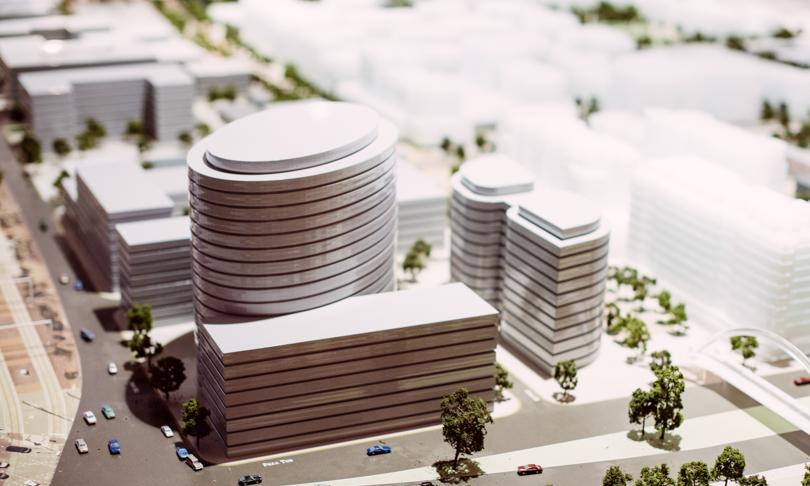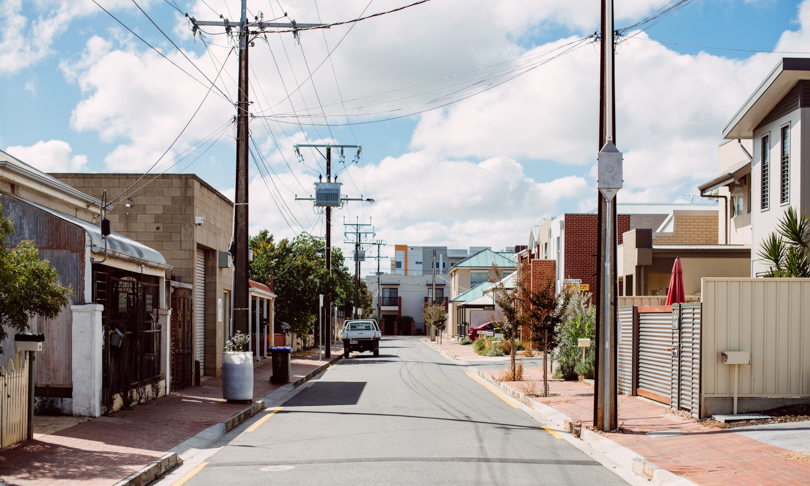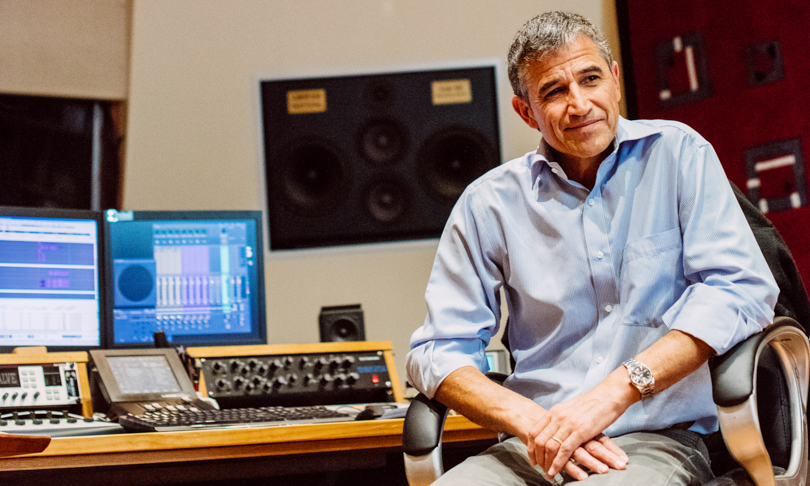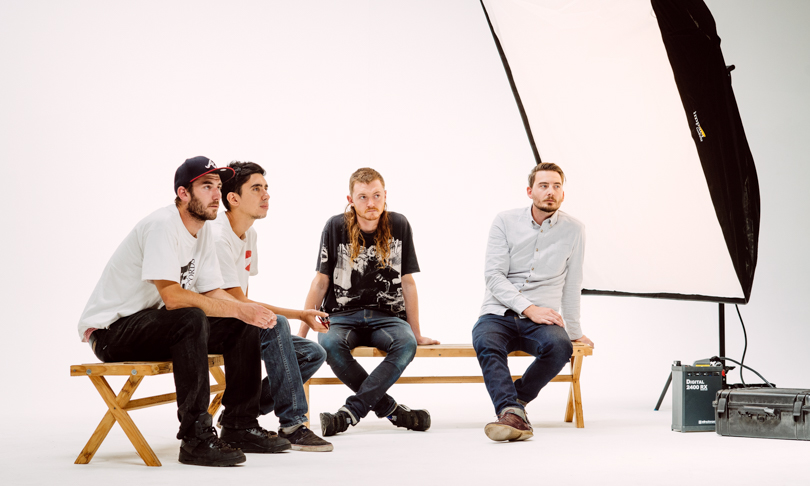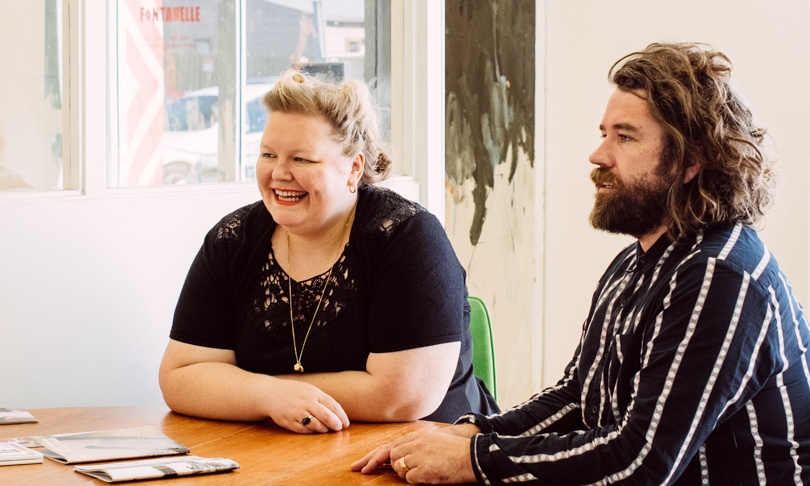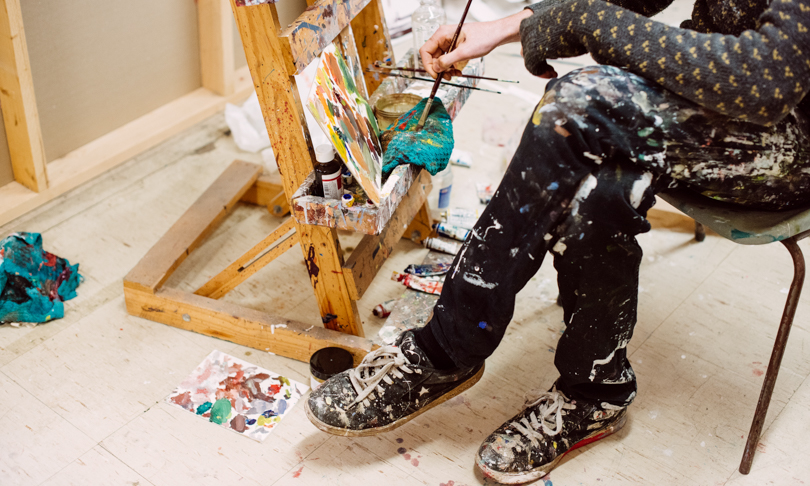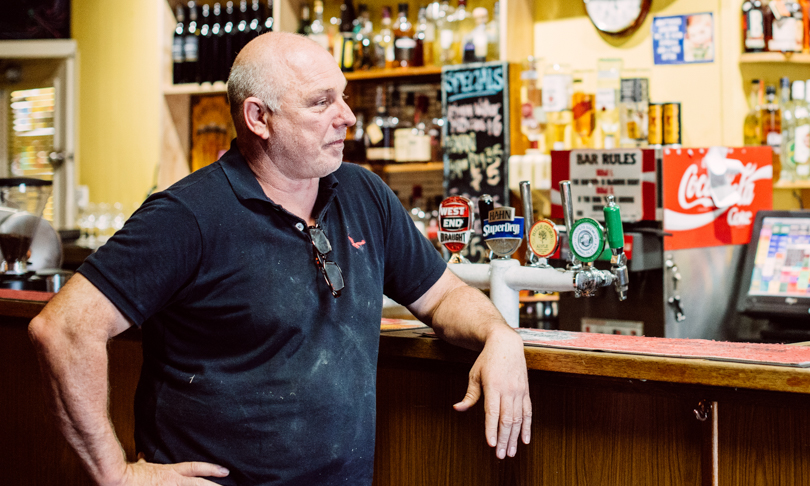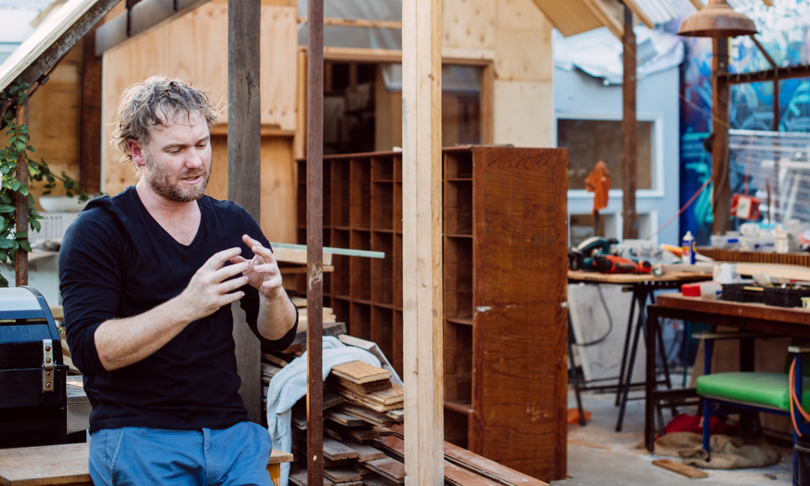The still-beating historic heart of industry in Adelaide is changing. Once a village of factories, workers, and their cottages, the new direction for Bowden is sustainable living and good design - all of which could be at odds with the precinct's working class heritage.
Making the old part of the new
Entering Bowden via Sixth Street off Park Terrace, there are few clues hinting at the suburb’s industrial past.
There is a Federation-era pub, now the bright and refined Jarmer’s Kitchen, and a large warehouse that once a week hosts an organic and sustainable market.
In the other direction, where the Clipsal factory once stood, rows of newly-built apartments obscure the historical suburb that sprawls out a short distance behind them.
This is stage one of a development that the State Government hopes will transform a once heavily carbon-reliant neighbourhood into Adelaide’s first purpose-built, environmentally conscious residential green village.
“I think it’s been a bit of a hidden gem really,” says Bowden project director, Alicia Davidge.
“Two and a half kilometres from the city, I always think that this land, if it was in Sydney or Melbourne, would be wrapped up, it’s pretty crazy. But I also think it was an opportunity, with the Clipsal site being for sale, with the Gasworks site as well; I don’t think any other private developer would be able to take on the environmental responsibility for that land.”
After purchasing and rezoning the Clipsal and Gasworks sites in 2008 and 2010 respectively, government department Renewal SA is now requiring all developers involved in the project meet a five star rating with the Green Building Council of Australia’s Green Star system.
“Firstly our role is to remediate all the land here, and I think that’s one of the forgotten things that we do,” Alicia says.
“[But] I think it’s the Government’s role to create benchmarks and to ensure that by giving those benchmarks, that the development industry exceeds expectations.”
The standards Renewal SA is enforcing mean buildings are designed to use less electricity and water, and produce fewer emissions than if they were built to the minimum Australian standards.
Together with the narrowed streetscapes, created to slow down traffic and promote alternative forms of transport like walking and cycling, and the many public transport options available, there is a clearly defined end goal for the development.
It’s an ambitious aim, and one that sits starkly at odds with the history of heavy industry that defines Bowden. That history isn’t going away – it will continue to exist, at least for the time being, in areas the development isn’t reaching out to.
To try and mediate the integration between old and new Renewal SA facilitates a community reference group once a month that includes residents from both Old Bowden and the developed site.
“It was always going to be an interesting ride to deliver 2,500 dwellings by the end of it here, in quite a historic working class-type community. [It’s] had its challenges, but I think we’ve done a really, really great job in the community engagement that we’ve undertaken,” Alicia says.
“They have been our biggest advocates, the existing community. I think they were really happy to see the changing use from the industrial-type area.”
She admits though, that the few industries still left in the area are feeling the effects of the change.
“Truck drivers won’t even come through these streets,” Alicia says. “But I think it’s part of development, and it’s part of gentrification. I do believe it’s actually sad, because there’s a lot of local business here, but just through that process, industry does kind of get pushed out.
“But there’s also uplift in their land value, so that’s what they also, I think, can see … and if people want to make that decision to sell their industrial block and then move out further north where they can get a smaller site, as long as they can still deliver their product and manufacture it, I think it’s fine.”
Attitudes toward the development from people in the area are varied. Neville Clark, whose sound production business Disk Edits has been based in Bowden since 2000, reminisces on a time when he was part of the suburb’s industrial hustle and bustle.
“Strangely enough, in about 1981 I actually worked a little bit further up the road, and it was all industry,” he recalls.
“This was when I was still trying to find my way into the sound business, and I worked in a plastics factory up the road. There were foundries, there was a couple of building companies that specialised in building panels, there was our plastics factory, there were warehouses, there were delis.”
The suburb is much sleepier now though, and with most of the industry gone, the last of the Gibson Street delis’ doors have closed. But that shift is not necessarily a bad thing in Neville’s eyes – now that industry is out, new people are moving in and attracting new businesses to the area.
“If I had my choice of where I’d want to set up a studio again, I’d be in Adelaide Arcade, without any hesitation, because of the atmosphere, the vibrancy, the whole feel of it, you know? But I think this area here is slowly sort of changing and lifting up, which is good!” he says.
At one end of the suburb, Hawker Street provides locals with cafés and restaurants, at the other end is Jarmer’s; and nearby in Hindmarsh, The Gov, The Loose Caboose, and a bevvy of options along Port Road ensure there is always somewhere to duck out to for a coffee or a beer.
“I think it’s a good thing,” Neville says. “The area was pretty dumpy and dingy. When you think about it foundries were a very dirty industry, and there were three of them. I think it’s really good that it’s cleaned up and it’s moving forward towards something that’s a little more cosmopolitan.”
The next stage of development, though, will see more residential buildings raised, and the introduction of a town square and retail precinct, slated for completion in July 2016.
These are both major pieces of the development that Alicia and the team at Renewal SA have had to sell to residents nearly two years before they’re likely to see anything concrete.
“We say it and we’ve got to deliver on it because it’s really important for our existing residents,” Alicia says.
“We think it’s going to reposition the project and actually create a destination; so not only provide retail for the existing residents here, but actually create a destination for people outside of this area to come to.”
Not that there aren’t already good reasons to come to the area – with many of the suburb’s streets lined with public art and beautiful heritage-listed buildings, it’s easy to lose track of time exploring the cosy suburb.
Where a void of business exists, though, you can always be sure the creative industries will find a way to fill the vacancies.
Fontanelle is a not-for-profit art gallery and, according to Brigid Noone and Ben Leslie who run it together, is the biggest artist studio complex in Adelaide.
The space is rented to the pair on a subsidised lease, courtesy of Renewal SA, and shows that there is some progressive thought going into how best to take Bowden into the future.
“I think they know that we are an unusual business model,” Brigid laughs, “but I mean we had really good references and a good history to come with. I suppose they did take a gamble on us, but I think the way we put the space together and it all came together, they were pretty impressed.”
But whether that support will last, they’re unsure.
“We’re not cynical, but the guy that’s probably in charge of place-making here has left now, so it’s almost like the groundwork for the transformation will take place from what’s already happened. And I guess, we’re coming from it more from a political artist’s position, thinking ‘how are they going to foster these sorts of things long term?’,” Ben says.
“If you look at other models in other countries, it’s not sort of a mutually beneficial cycle that ends and someone ends up doing really well and the other people move on, it’s more of a long term solution, and an understanding of the arts as a part of society.”
“Moving towards having a master plan for art in a development like this, that would be the next step,” Brigid continues, “because I think, in the end their goal is to sell properties, and part of Cirkidz and us being here is their branding of a ‘life more interesting’ or a ‘life less bland’, and you know, that’s tangibly real for us, that we got to have the space, but I think how they support that long term is… you know, it takes philosophical change.”
On the more commercial end of the art spectrum, Tenth and Gibson is a photographic studio and co-working space built with the combined efforts of a collection of Adelaide creatives.
After coming across an empty warehouse along Gibson Street, it seemed a logical idea to set up in the quiet, but not too distant, Bowden, rather than in the city.
“It’s getting a pretty good response, people come here and they’re like, ‘I didn’t even really know all of this stuff was down here’, and then they see all the new apartments and things,” says photographer Sven Kovac.
“I mean [the development] might get rid of some of the street charm of the characters that live around here, but I think, you know, it’s just going to bring in new sorts of people, and hopefully with that there’ll be more things that are useful to us, like cafes and restaurants.”
“It’d be a real shame though if in a couple of years, regardless of how big we got, it just became this thing of ‘yeah, better deal, sell it off and make apartments’ or something like that. I guess that’s not a huge concern, but you know, it is a thing that could happen,” says filmmaker Liam Somerville.
For the Tenth and Gibson crew, who are also renting their space, what happens going into the future depends on many factors out of their control: the price of land in the area and whether their landlord wants to sell are two of the most pressing, though they’re not overly concerned about it for the moment.
Mark Anders, owner of The Gaslight Tavern, is less confident in the direction the suburb is taking, how his business will fare going into the future, and whether the project will even survive long-term.
“So 25 years ago … they knocked Rowley Park down and put in 600 homes. From that point onwards, housing trust came in and put people in all down Blight Street and Second Avenue,” he says.
“Now that’s all changed because the land value’s so high. Go back eight years ago [the demographic] was 45-70 year olds. In the last seven years it’s gone from that to 25-45 year olds. [They’re] moving into the suburb – two people, no kids, maybe one kid, they eat out, that type of thing.
“So that’s where it’s going for now, and if you look at the way that they’ve designed and built the units on that side, it is designed for an urban young person in mind.”
In an effort to be proactive, Mark is taking it upon himself to renovate the pub and make it more attractive to the younger generation, while still maintaining the current Gaslight feel.
“We’ve decided that we’re going to do this in-house ourselves, and we’re going to give it character and style,” he says.
“It will cater to young people like yourselves, so still have that kitsch factor, it’ll have that trendiness about it, but it’ll have the comfort for the guys in vissies after work to walk in and sit down at the bar and leave mud all over the floor.”
As the last surviving industries in the area are gently choked out by Renewal SA’s green living master plan, and property values continue to rise due to investment in the area, it’s likely that the
“vissy” wearing crowd will migrate further north with the work and Mark will be less concerned about mud on the floor.
However, when so much of the culture of the area is shifting, there is a question of what will become of the 50 per cent of local residents who are living in housing arrangements with the State Government as co-op and Housing Trust tenants.
Renewal SA aims to exceed their planned target of 15 per cent affordable housing in the development, and so far, in one block, 26 out of 42 apartments are retained by not-for-profit group Unity Housing.
But more so than a physical space, people need a sense of place, and whether the ingrained culture that is written all over Bowden’s landscape is tough enough to survive such a drastic change in tone will not be seen for years to come.
“We are trying to ensure that we don’t just dump this big, sterile, slick kind of development in. We integrate it in with the local community, and the demographic as well,” Alicia says.
“I think we want a diverse demographic of people here, you know? That’s what creates a unique community.”
There are some in the area, like Brompton architect Damien Chwalisz, who are in favour of the development, but aren’t sure of the approach.
“It’s a pretty interesting strategy, doing the master plan and then getting a variety of architects and design construct companies to do four or five medium density residential blocks, but I think the problem is that there’s not – even though there’s differentiation driven by using various consultants – there doesn’t seem to be an underpinning idea about what the suburb is necessarily,” he says.
“That’s where I get disappointed. And there’s a lot of rhetoric, you know, all the signs, it’s going to be this, it’s going to be that, the street levels are activated and all of this greening of the footpaths and all of that type of thing, to make it more user-friendly, and it becomes a bit gentrified.
“I think it’s right on the cusp of its grittiness. I think a beautiful part of this suburb is its grittiness.”



